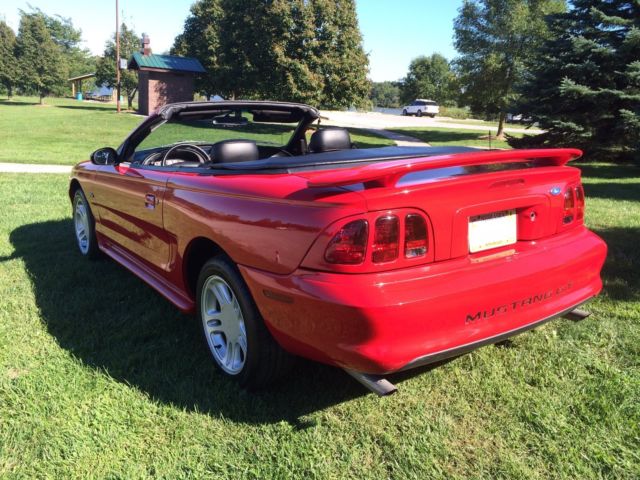

The water pump pulley was also decreased in diameter by the same amount in order to preserve the ratio of the pump's speed, and thus coolant flow.

The lower manifold was identical to the GT-40 manifold used by Ford Racing it redirects airflow to a rectangular port configuration as needed by the cylinder heads. Intake Manifold - The Cobra upper manifold was unique to the 1993 Cobra and had a 2.75 in (69.85 mm) diameter round throttle body opening, diverting air into (8) round staggered ports, each 1.64 in (41.66 mm) in diameter.The valves are actuated by Cobra-specific 1.7 ratio roller rockers, constructed of aluminum, and produced for Ford by Crane Cams. The valves measured 1.84 in (46.74 mm) at the intake, and 1.54 in (39.12 mm) at the exhaust. They were milled for 62.5 cc combustion chambers. Cylinder Heads - The GT-40 "High Flow" Cast Iron heads were installed.SVT engineers added the following performance items: The 1993 SVT Cobra's short block (cylinder block, crankshaft, rods, and pistons) was carried over from the GT model. This was done by using model-specific springs and sway bars.

Cobra models received a softer, more compliant ride compared to the GT model. The drivetrain received an upgraded transmission, rear disc brakes, and for the first time on a factory Mustang, 17-inch unidirectional wheels. Acceleration from zero to 60 mph (97 km/h) took 5.9 seconds. According to Road & Track, the Mustang Cobra could complete a 1/4 mile in 14.5 seconds at a trap speed of 98 mph (158 km/h). The exterior of the 1993 SVT Cobra was similar to that year's GT model with differences explained below. It was the premier vehicle of Ford's newly established SVT division, designed to showcase SVT's hallmarks of performance, substance, exclusivity, and value. The 1993 Ford Mustang SVT Cobra was launched during the 1992 Chicago Auto Show.


 0 kommentar(er)
0 kommentar(er)
